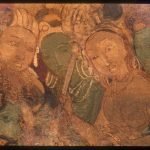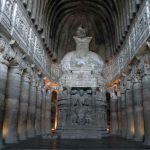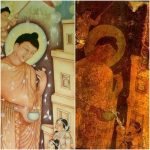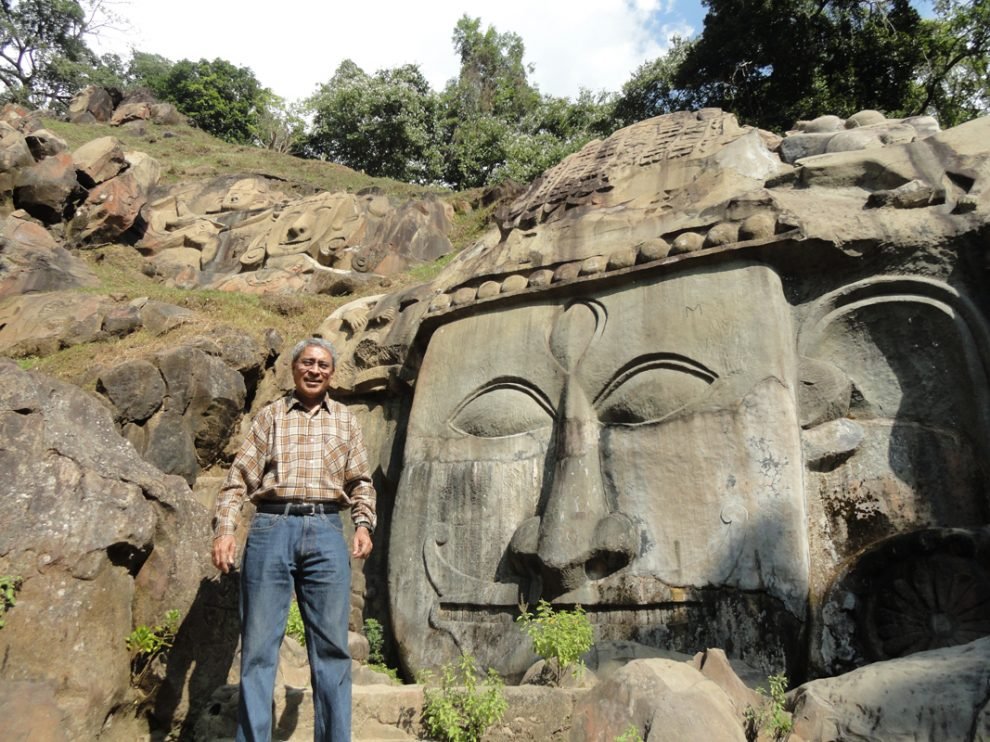In Buddhist logic the concept of impermanence and of interdependence of the objects of the world, comes from the objective analysis of reality itself. In the words of His Holiness the Dalai Lama, Western scientists have studied phenomenal reality and eventually come to the same conclusions which are presented in ancient Indian Buddhist logic and philosophical texts. These thoughts of the Dalai Lama are revealed to the world through the genius of Benoy K. Behl, in his much-acclaimed film ‘Indian Roots of Tibetan Buddhism’, where slow-motion grand shots of Buddhist meditative dances are juxtaposed with interviews of His Holiness. Behl’s documentary, produced for Ministry of External Affairs, Government of India, has been critically acclaimed and has won several film festival awards, including at the prestigious Madrid International Film Festival.
Benoy K. Behl is an internationally renowned art historian, photographer and filmmaker, who is known for his tireless and prolific output of work over the past 45 years. He has taken over 10,000 photographs of Buddhist heritage. This photography has been carried out through extensive travel to even the most remote locations, both across India and covering the whole of Asia.He is one of the world’s foremost authorities on Buddhism. Behl is listed in the Limca Book of Records as the most travelled photographer and art historian. (Limca Book is an annual reference book published in India and it documents Indians’ achievements in various fields).
“The beauty of art is truly understood by the way it is represented. The compassion with which Mr. Behl’s lens captures art allows it to be presented in a manner that reveals its true beauty, goodness and vision of life. A treasure of knowledge is revealed through the works of Mr. Behl. His revelation of the Ajanta Caves paintings, in the context of its significance in all cultures across Asia, is a prime example of the same. Today, people across the world can appreciate the paintings of the Ajanta Caves as some of the greatest art created by the human hand, thanks to the way Mr. Behl’s photographs present them to the world”,says Ashwin Srivastava, whose organisation Sapio recently preserved a paper written by Mr. Behl on the Ajanta Caves, for perpetuity at the Arctic World Archives in Svalbard, Norway. Ashwin Srivastava is making dynamic efforts to preserve Mr. Behl’s photographic documentation, as well as the vision of life contained in ancient Indian art, for posterity.

Behl’s works on Buddhist heritage have been exhibited in India, Myanmar, Thailand, Lao PDR, Indonesia, Cambodia, Vietnam, Bangladesh, Sri Lanka, China, Japan, Mongolia, Siberia, Uzbekistan, Kalmykia (in European Russia), Afghanistan, Tibet, Nepal, South Korea and Bhutan, as well as in the European and American continents. His exhibitions show the birth and the development of different schools of Buddhism in India and their spread to the many countries of Asia. The significance of Buddhism is demonstrated through these works that show the deeply shared Buddhist traditions of the whole of Asia. It is a journey through Buddhist history and culture, from the time of the life of the Buddha, to the development of Mahayana and Vajrayana Buddhism. Behl’s exhibitions show the birth and development of numerous Buddhist deities in Eastern and Western India, as well as the spread of these traditions to distant lands.
Behl has documented Buddhist art at sites such as Borobudur in Indonesia, Dungkar Caves in the Tibet Autonomous Region, Sukhothai in Thailand, Bagan in Myanmarand the Sigiriya Caves in Sri Lanka, as well as hundreds of other sites. He believes that what is great in all this Buddhist art is that it transports you to the peace that can be found within, far from the noise and clamour of the material world around us.
The art of Buddhism provides a vision of life in its entirety. This art takes us from the sensory world around us to the highest realms of the spiritual, in a continuous path. Behl’s work over the past 45 years has portrayed the ancient philosophy of aesthetics. The grace of nature and of art, transports us to a higher realm, leaving behind the mundane aspects of life. Therefore, in this tradition, our emotions and aesthetic responses areharnessed, helping us to understand and reach out to the divine, which is beyond the world of interdependent forms. Ancient Buddhist art, originating in India, seeks to elevate us through our aesthetic response through all the forms which are depicted.
Experts believe that a detailed study of Buddhist heritage can open doors to many questions that plague the growth of human understanding and consciousness. The culture of the continent of Asia is informed by the ethics and compassion of the Buddhist faith, which spread from India in ancient times. This knowledge is transmitted through Behl’s many films, exhibitions, books, lectures and photographs. This great treasure of documented Buddhist heritage is expected to be the true revelation of Buddhism and its significance for the entire world.
















Add Comment